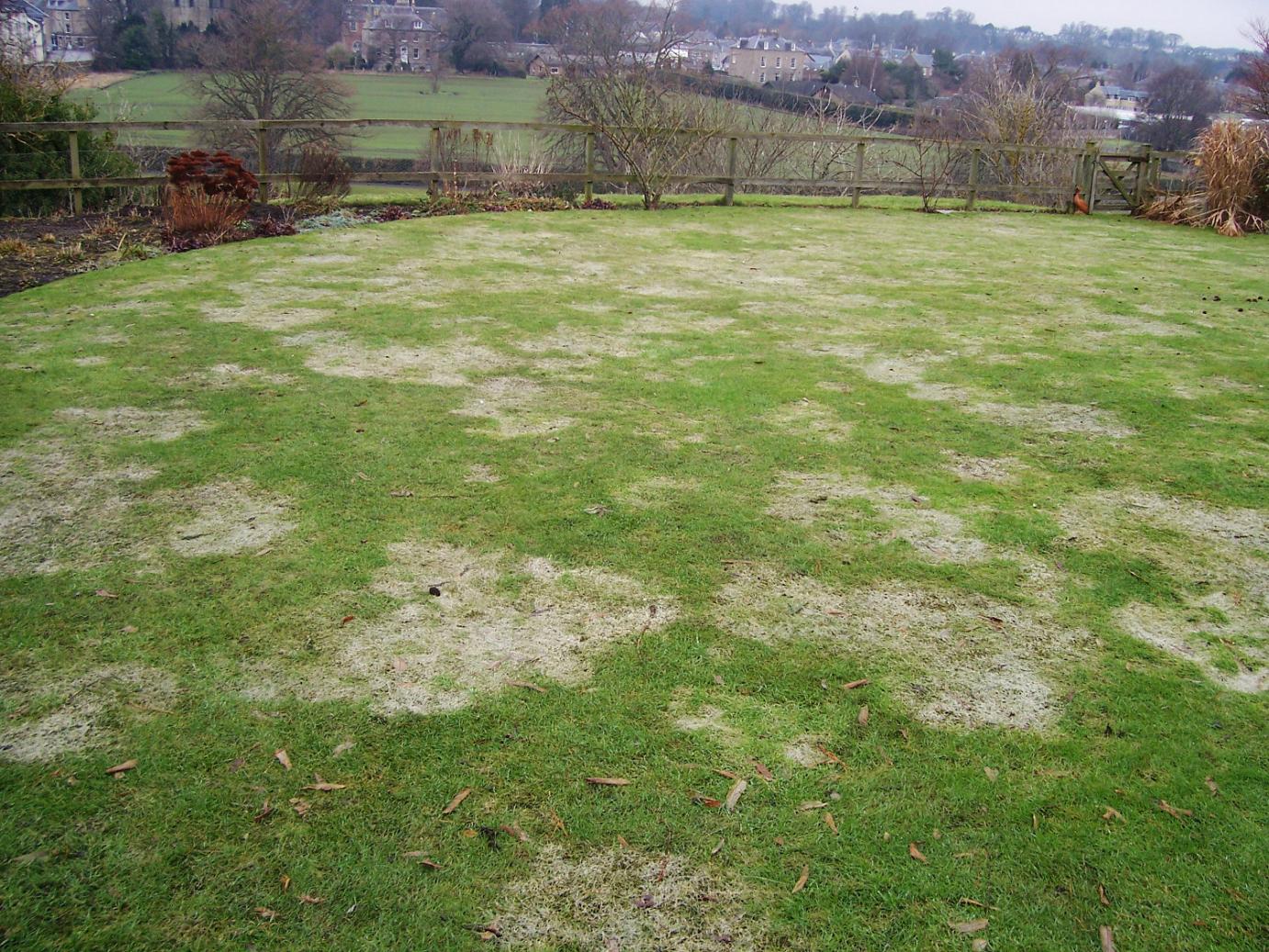
Spring brings consistently cool temperatures and wet weather, the perfect conditions for a variety of molds, fungus and other lawn diseases. Some lawn diseases are easier to eradicate than others, but prevention begins with the tried and true lawn care maintenance tips we’ve shared previously including things like proper mowing tips.
Prevention is better than any cure, and the following tips are the best way to help your lawn stay healthy and resist lawn diseases.
1. When mowing, leave the grass longer and mow more frequently (leave 1/3 of the grass blade intact).
2. Don’t overwater, or water at night.
3. Aerate and dethatch your lawn for proper air circulation and growth.
4. Ensure the proper fertilizer is applied at appropriate times and is well watered into the soil.
Here are some of the most common lawn diseases found in Ontario.
Leaf Spot
Leaf Spot flourishes in the humidity of our spring and summers. You’ll notice small purple spots on your grass which will spread to the entire stalk and kill the grass. One of the common causes of leaf spot is a lawn that’s been fertilized but not well-watered to ensure the nutrients reach the soil. Lawns that are kept too short are also susceptible.
Pink Snow Mould
Fusarium Patch, more commonly called Pink Snow Mould, is a fungus that attacks your lawn in spring and fall. You’ll notice a white fuzz on the lawn that if left will cause small brown spots to appear. As the spots grow they’ll change to a pinkish colour. The easiest way to treat this is to give the lawn a good raking before the spots appear to allow the grass to get a stronger start.
Once the spots have appeared, leave the lawn until it’s dry and then give it a good rake. Aeration, dethatching, and/or a fungicide may also help.
Ring Patch
Ring patch is best prevented because it is difficult to get rid of once it’s in your lawn. A lawn infected with ring patch will have light green rings or a crescent pattern appear. The grass around the light green patches may die. Eventually, the light green patches will also turn brown. Aerating, dethatching, and proper lawn maintenance is the best way to prevent this lawn disease.
Rust
Rust is considered a minor disease in Ontario. Homeowners may not notice rust until they walk across the lawn and discover a rust colour left on their shoes. Rust will travel from one yard to another with the wind looking for a damp or wet lawn to stick to. Keep your grass a little longer and mow more often to promote healthy growth. Fertilizer will likely help clear the problem up. Be sure to know what kind of fertilizer to apply and how to apply it because too little or too much nitrogen can actually promotes rust growth.
Not sure if a lawn disease has afflicted your lawn? Is your lawn affected by one of the diseases mentioned above? Contact the lawn care experts at Nutri-Lawn Burlington to diagnose and treat the problem before it spreads to your entire lawn.






